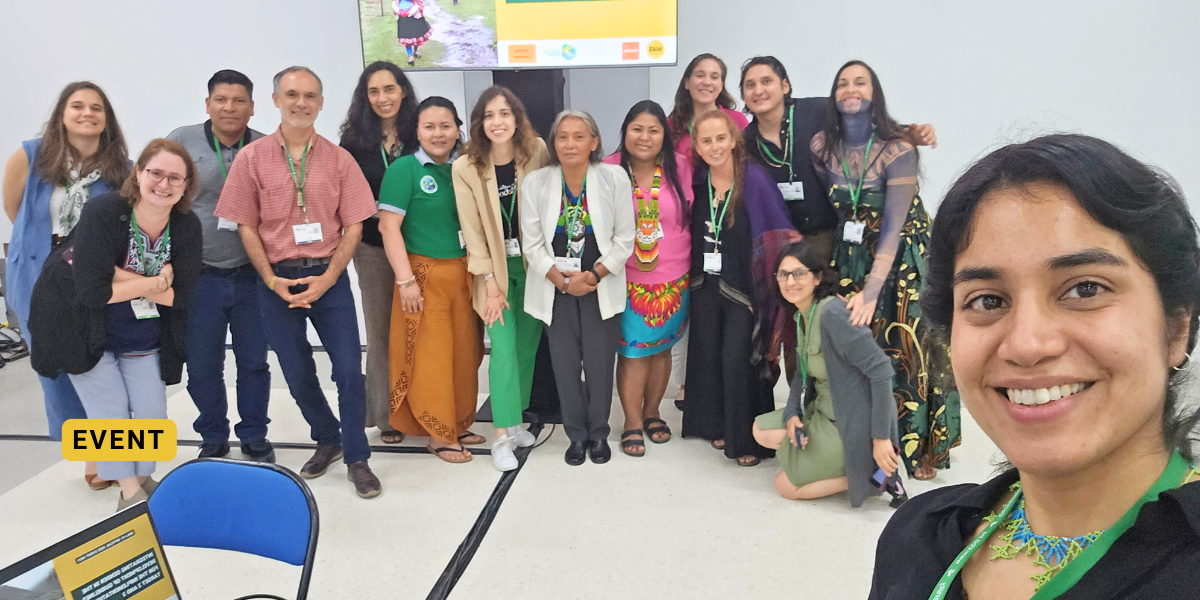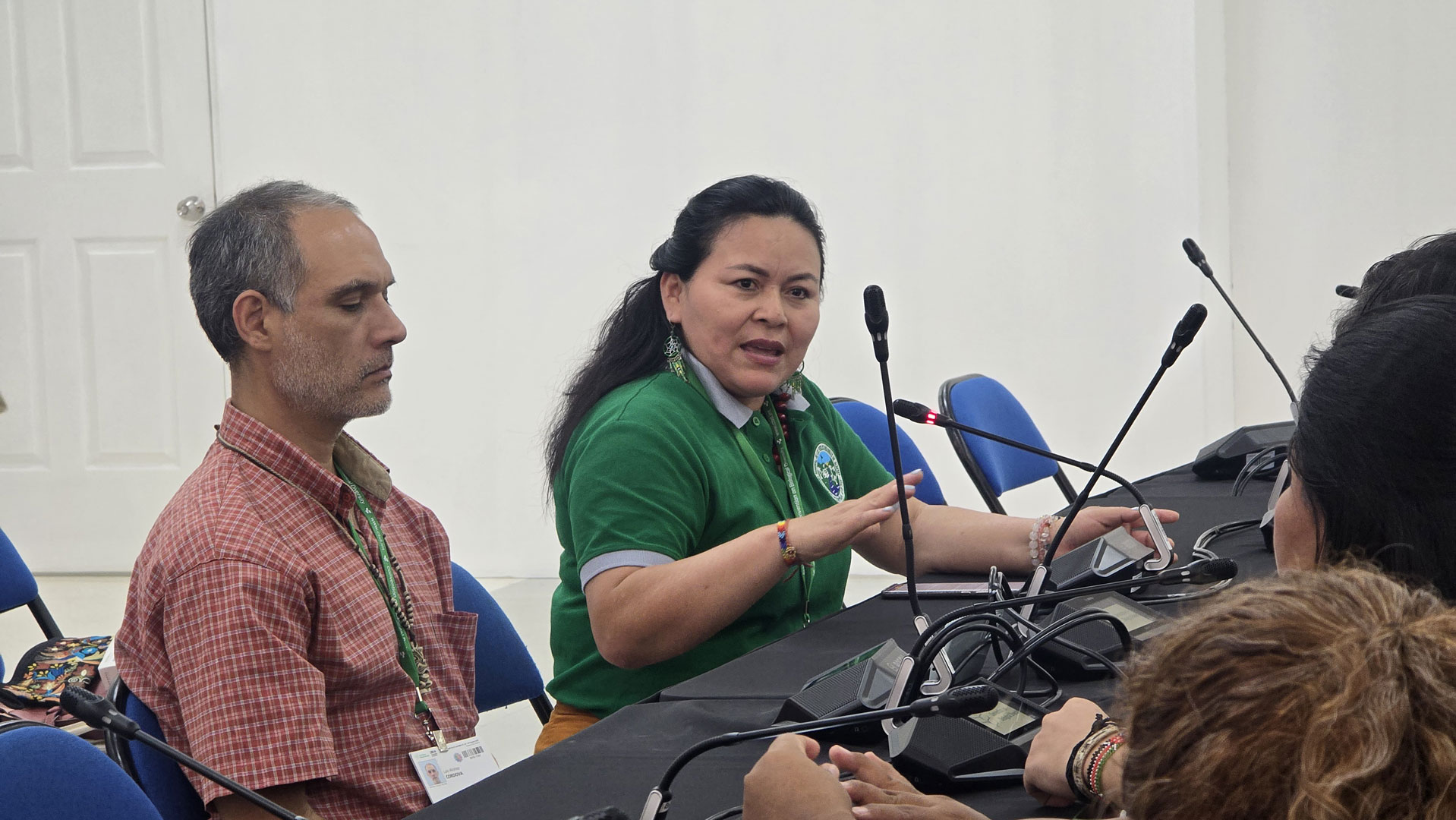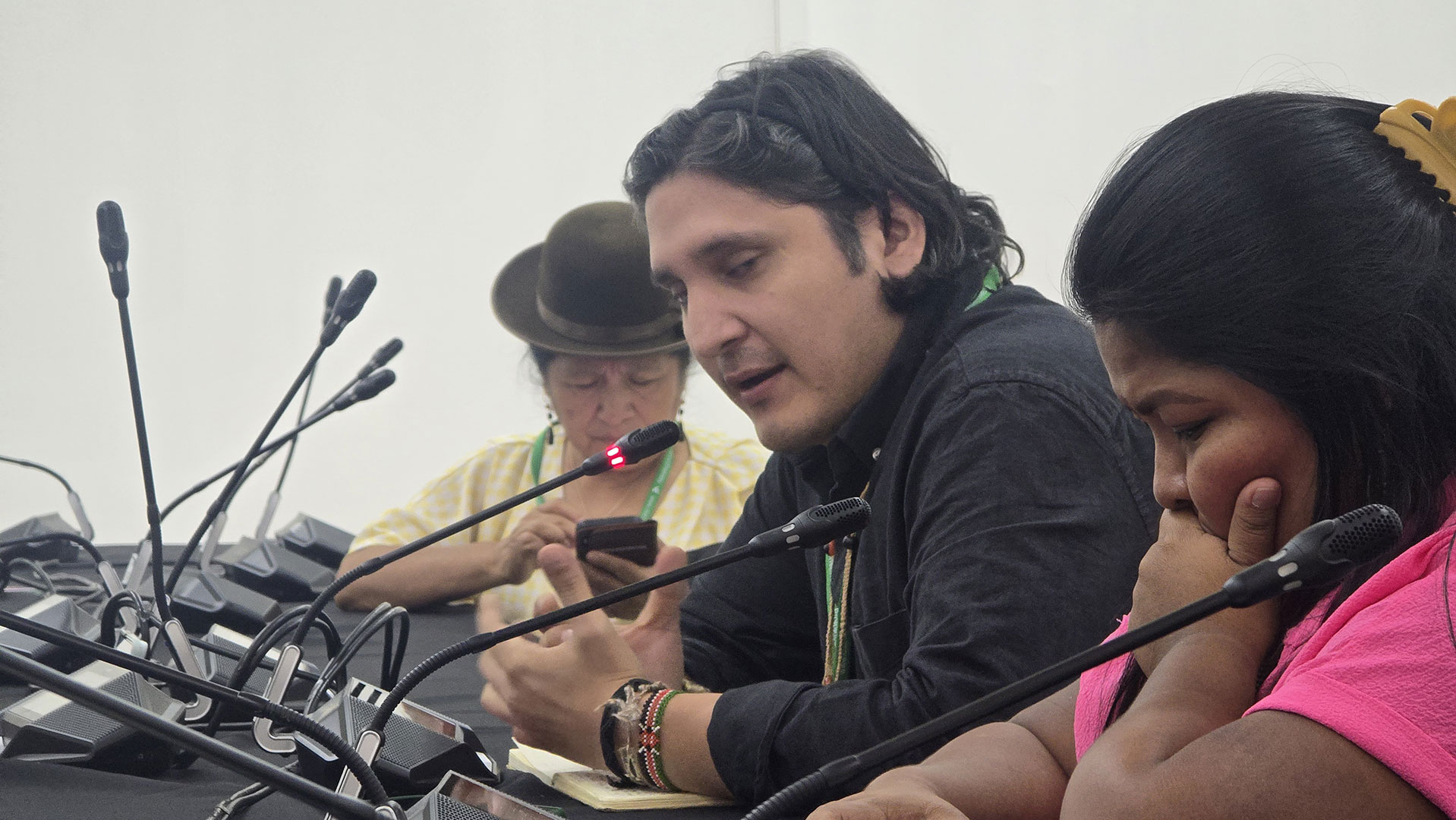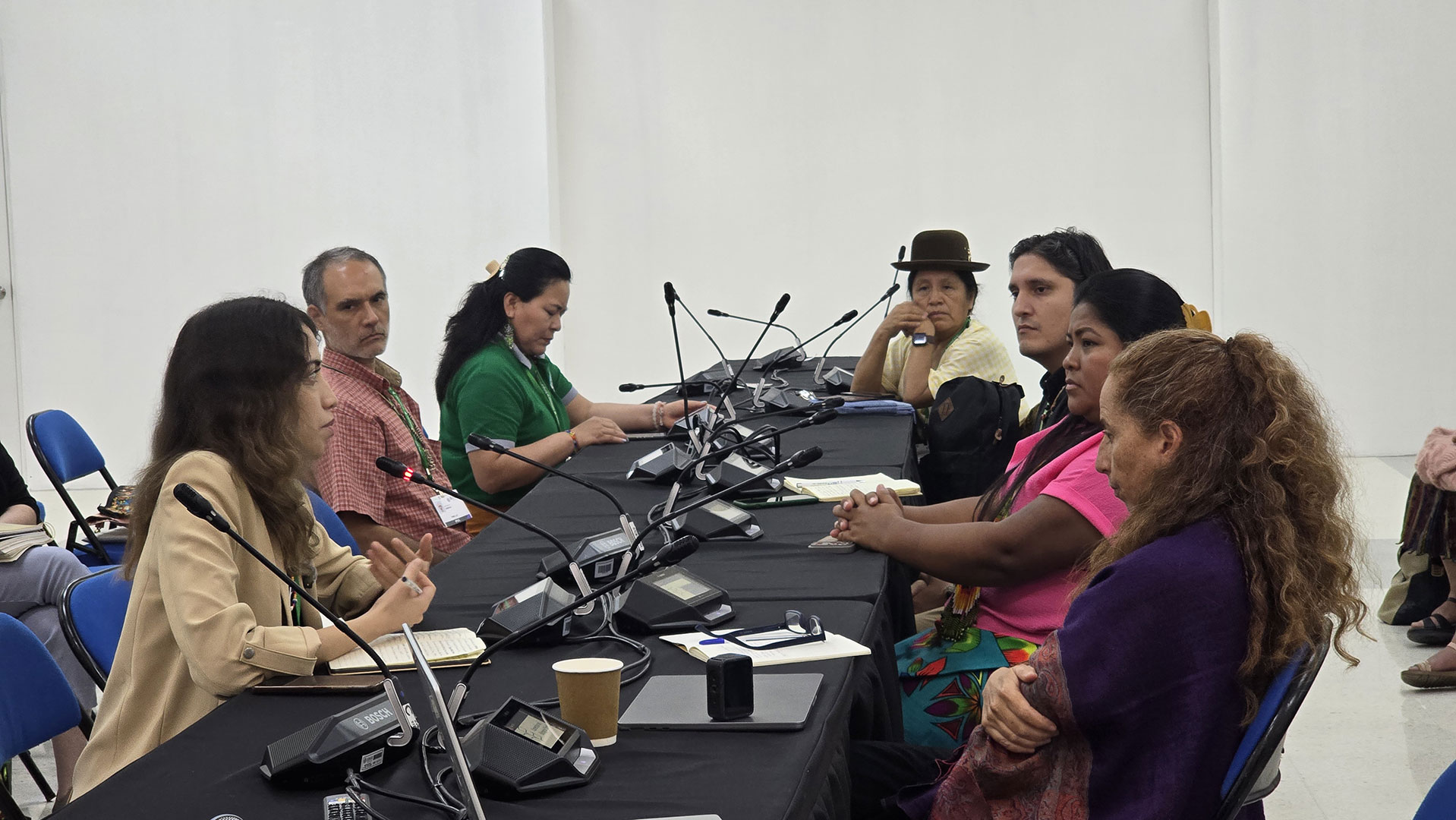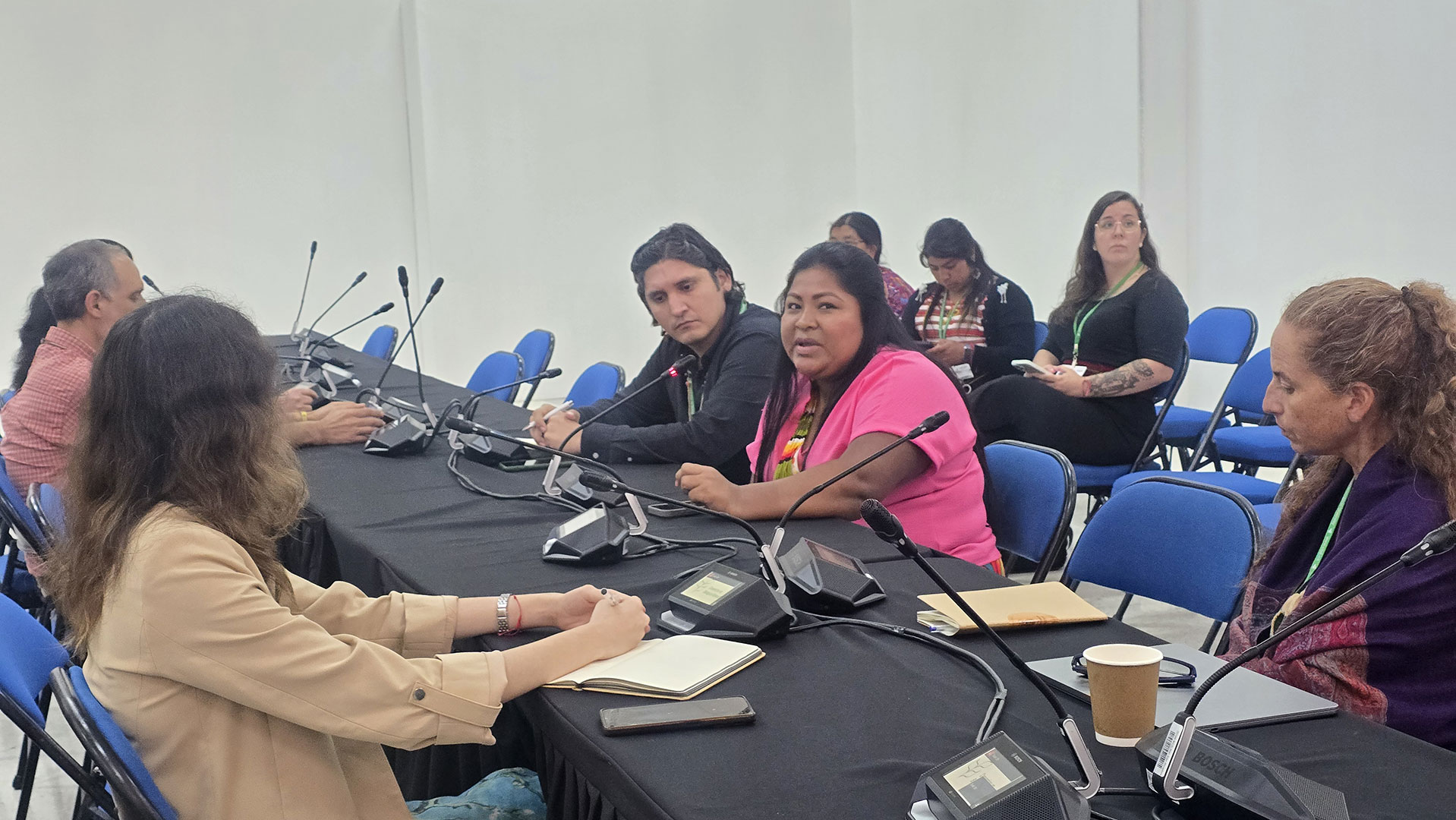Alejandra Duarte (Women4Biodiversity) with the speakers during the event.
The Kunming-Montreal Global Biodiversity Framework (KMGBF) recognises the essential role of Indigenous Peoples and local communities in biodiversity conservation. COP 16 established the Subsidiary Body on Article 8(j) and adopted its Programme of Work on Article 8(j) (Decision 16/4), guided by inclusive, and gender-responsive participation and aligned with the Gender Plan of Action (2023–2030). The SB8J’s first task is to develop guidelines to strengthen legal and policy frameworks for implementing Targets 2 and 3, including in Indigenous and traditional territories. These guidelines must empower Indigenous women and girls, who play a vital role in biodiversity conservation and restoration but continue to face discrimination and marginalisation in decision-making, access, and resource ownership, and their contributions remain underrecognised.
The official side event 6831 hosted by Women4Biodiversity, in collaboration with ICCA Consortium, GYBN LAC, IIFB, Barranquilla +20, Alianza Global de Comunidades Territoriales -GATC, WWF Perú, and supported by SWEDBIO, created a space for dialogue and technical exchange to emphasise the need to integrate gender and rights-based approaches into the new guidelines; examine challenges and opportunities under Target 2: Restore 30% of all Degraded Ecosystems and Target 3: Conserve 30% of Land, Waters and Seas; and highlight women’s leadership and traditional knowledge in biodiversity restoration and territorial governance.
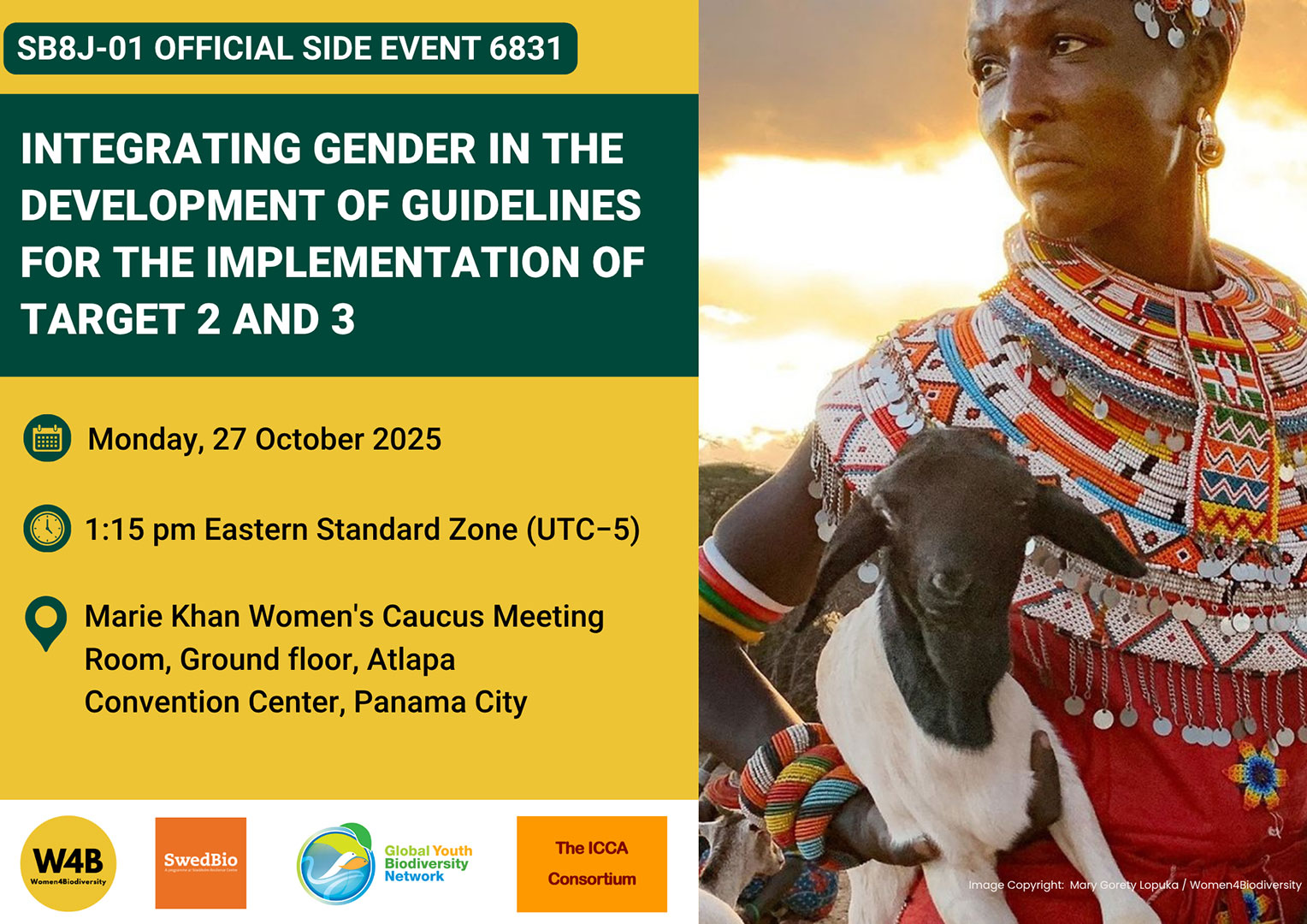
María Eugenia Choque Quispe, from the International Indigenous Forum on Biodiversity (IIFB), emphasised that effective participation of women in implementing Targets 2 and 3 must be grounded in capacity building and integral territorial management. She stressed that territory is not only a physical space but the foundation of cultural, social, and spiritual life. She highlighted traditional practices such as Andean agricultural calendars and the management of highland and lowland areas, which sustain local livelihoods and biodiversity. Choque underscored the need to recover history, language, and cultural values as the basis for new territorial planning, including a participatory glossary of biodiversity-related terms. Biodiversity, territory, and culture are inseparable, and CBD processes must integrate these perspectives to ensure the substantive participation of Indigenous women in ecosystem governance.
Lorena Arce, ICCA Consortium, emphasised the need to strengthen technical teams and local support mechanisms to improve coordination between communities, organisations, and negotiation processes. She called for greater visibility of community data and conservation experiences within CBD platforms, as well as their integration into national biodiversity strategies and the Gender Plan of Action reports. Arce also urged the establishment of clear monitoring and accountability mechanisms, supported by sustained technical and financial assistance to local networks, ensuring that international discussions lead to concrete territorial action.
Sara Omi, Global Alliance of Territorial Communities (GATC), noted that Indigenous women in Mesoamerica face significant barriers to influencing restoration and conservation policies. Although they are frontline defenders of their territories, their full and effective participation remains limited. She stressed that Indigenous women are rights-holders, not thematic actors, and that their knowledge must be recognised in territorial governance. Sara condemned the criminalisation of women leaders and the lack of access to funding, affirming that the KMGBF cannot advance without the active and safe participation of Indigenous women.

Tabea Casique Coronado, Ashéninka leader from AIDESEP (Peru), emphasised that the legal recognition of territories and Indigenous governance systems is the top priority for Indigenous women. Without land titling and security, she noted, effective conservation and restoration are impossible. She highlighted that national policies still fail to recognise Indigenous women’s rights and decision-making roles fully. She called for equitable resource distribution and the integration of women’s traditional knowledge into territorial management and local economies. She urged the adoption of flexible public policies that strengthen Indigenous family and communal economies, remove administrative barriers, and support sustainable, autonomous production systems.
Daniela Arredondo, from the Global Youth Biodiversity Network Latin America and the Caribbean (GYBN LAC), emphasised that Indigenous youth and women already lead concrete conservation and restoration initiatives but are still treated as external actors. She called for greater visibility and intergenerational, gender-responsive participation in the implementation of Targets 2 and 3, linked to Target 22 and Target 23 on rights and participation. Arredondo emphasised that policies must be context-specific and community-informed, ensuring that conservation efforts also enhance human rights and quality of life.
Estevan Marín, from Barranquilla +20, presented the Mallorquín Vive initiative, which focuses on restoring native seeds and advancing political advocacy to strengthen local conservation. He highlighted that rights- and gender-based approaches enhance both ecological and social resilience. Marín stressed the importance of ensuring direct and traceable financing, without intermediaries, and establishing community-led monitoring and accountability mechanisms to support fair and sustainable restoration processes.
Alonso Córdova, from WWF Peru, stated that integrating Indigenous and gender perspectives in restoration requires moving from theory to practice through a rights-based, inclusive conservation approach. This model is based on four pillars: participatory governance among the State, civil society, and Indigenous institutions; collaboration with partners based on life plans and territorial management; assurance of fundamental rights, such as health and education; and the self-determination of Indigenous Peoples. Emphasising that NGOs should act as technical partners, helping strengthen Indigenous organisations and their direct access to funding.

Effective alliances must build capacity, autonomy, and protection for Indigenous people and local communities to ensure long-term conservation outcomes.
The discussion underscored that integrating gender and rights-based approaches into the guidelines under Task 1.1 is essential to ensure that the implementation of Targets 2 and 3 effectively reflects the priorities and traditional knowledge of Indigenous Peoples and local communities; biodiversity conservation and restoration cannot be separated from territorial governance, cultural practices, and women’s leadership.
Priority should be given to advancing the legal recognition of Indigenous Peoples’ and local communities’ traditional territories and promoting an inclusive and participatory governance that ensures the full and effective participation of women and youth, while addressing the structural barriers that continue to limit their engagement in decision-making processes. Strengthening local capacities, ensuring direct financing, and recognising traditional knowledge as a foundation for policy and planning were identified as key actions to translate international commitments into effective national implementation.

